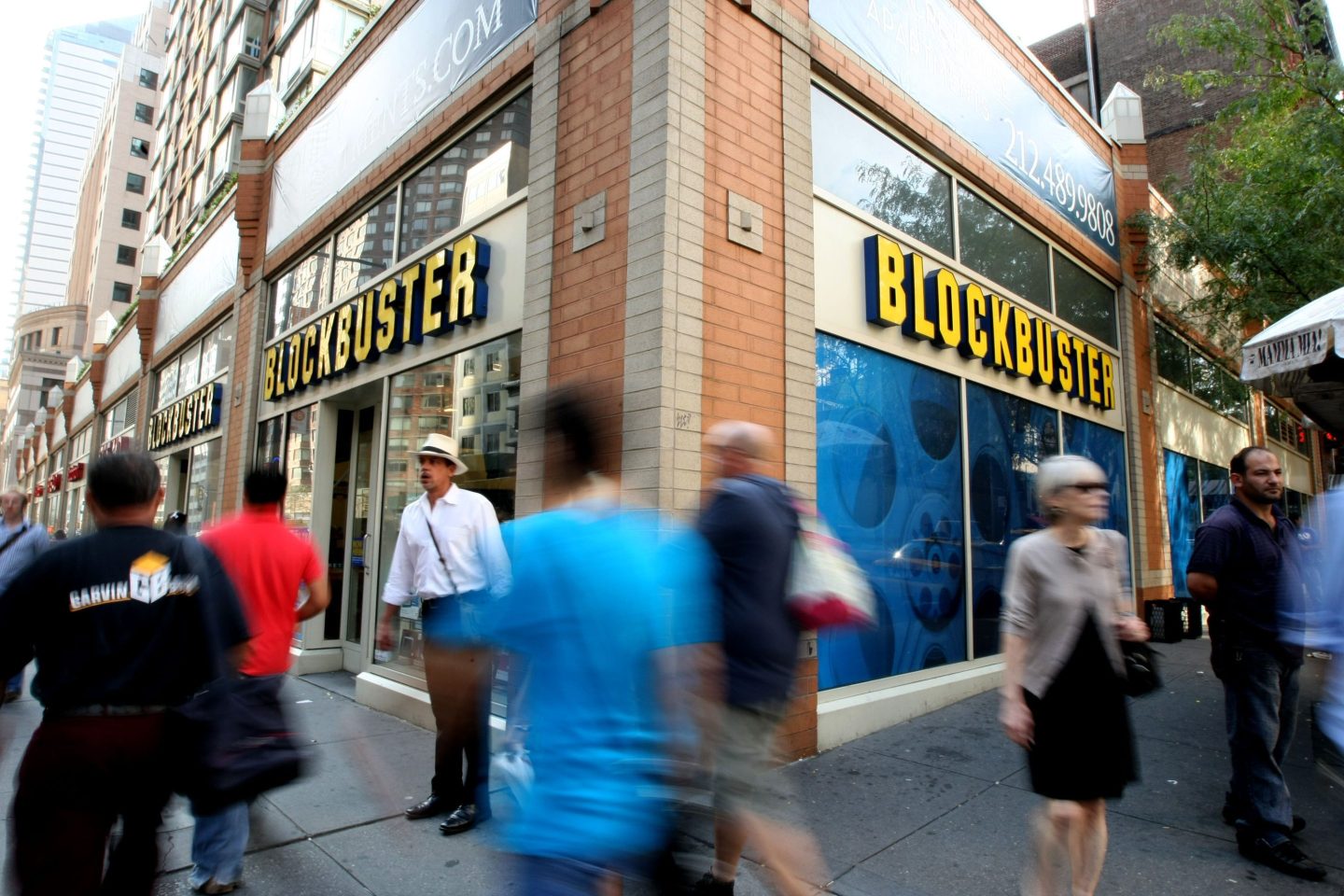Those of us who were regulars at Blockbuster recall the night-and-weekend ritual of movie rentals—and the moment streaming made it obsolete. Fewer remember that Blockbuster actually sold its own demise: I bought my first Blu-Ray player there, which became my first streaming device. Blockbuster was investing in late fees and store layouts while the future of entertainment was passing right through its doors.
Today, CEOs are betting their careers on AI with the same confidence the once-great video rental giant Blockbuster had in late fees. The lesson isn’t just about missing a disruption. It’s about failing to read the signals in plain sight.
And with reports suggesting that AI will either gut legacy industries like consulting or future-proof them, it’s worth looking back to move forward.
The problem isn’t tools—it’s signals
For decades, corporate leaders in every industry have misunderstood or ignored market signals like these, even when they were obvious. I’ve lived through multiple tech transformations, and the writing has never been clearer than it is with AI. If you’re ignoring the signals now, you’re breaching your duty to shareholders—and unlike past waves, there won’t be time to recover.
Right now, CEOs are both bullish and anxious. Some are hiring for AI-powered roles. Others are cutting headcount in anticipation of efficiency gains. Some are doing both.
This is understandable, but it misses the bigger picture. AI isn’t just another tool to optimize today’s workflows. It’s a force multiplier that rewrites what problems are even worth solving.
Solving the wrong problem
Think about call centers in the 1990s. Companies rushed to implement call recording to improve compliance and quality. But they never asked the more important question: why are customers calling at all? The real value wasn’t better call monitoring, but using that data to eliminate the need for those calls entirely.
When businesses finally figured this out, it helped them develop self-service portals, predictive support, automated resolution, and solutions for broken processes in their customer service journey.
This mistake repeats across every major transformation. Using AI to optimize existing processes is like a timber company having lumberjacks tie chainsaws to the end of manual axes. Do that, and productivity would plummet. Teach your lumberjacks to adjust to the new tech instead, and you would modernize.
However, leaders can have a tendency to try to optimize inefficient processes with shiny new tech instead of questioning their existence. And AI exposes this flaw at scale. AI will do an amazing job of accelerating bad processes and amplifying the incompetencies of employees if not deployed thoughtfully.
The truth is stark: AI can already outperform humans at a vast number of cognitive tasks, from data analysis to pattern detection to diagnosing problems no one else sees. The winners of the next decade won’t be the companies that use AI to polish existing processes—they’ll be the ones that let AI uncover the signals human intuition misses and reimagine their operating model around them.
Half the Fortune 500 are gone … and why that matters
More than half of the Fortune 500 from the year 2000 no longer exist. Most didn’t fail because they lacked vision. They failed because leaders couldn’t interpret the signals fast enough.
We are drowning in data, while AI was born to swim in it. Blockbuster in 2007 wasn’t blind to Netflix—it was just too focused on refining the in-store experience to recognize that streaming was the only problem that mattered. That’s how incumbents die: not from lack of effort, but from solving the wrong problems at scale.
AI thrives where humans fall short, sifting through complexity, separating signal from noise, and pointing to the problems we didn’t even know we should be solving.
The billion-dollar blind spot
Consulting illustrates this perfectly. Too many projects still aim at the wrong problem from day one. Companies spend billions on “AI for AI’s sake”—automating costs, layering dashboards, building point solutions—while ignoring the harder, more important question: how does this reshape our ability to grow?
The real missed opportunity here is enormous. Most incumbent players don’t want to change. AI can already analyze how companies find, win, and keep customers, flagging where performance is breaking down and where investments are hitting diminishing returns. It suggests pivots before competitors catch on. Yet, most conversations with CEOs still revolve around workforce reduction. This misses the point entirely.
Stop pretending. Start building
History moves faster than we remember. The Wright Brothers’ first flight to the Moon landing took just 60 years. Apple’s “1984” ad to global e-commerce? Barely a decade. Netflix launched streaming in 2007. By 2010, Blockbuster was gone.
The adoption curve for AI will be even faster. The only CEOs who will thrive are those building with AI at the core of their business, not those treating it as a bolt-on efficiency tool. And this isn’t just about technology. The thinking matters. The teams you bring with you matter. The urgency matters.
AI isn’t a shiny tool—it’s a signal detector in a world where signal blindness kills companies. Ignore it, and you risk building your own obsolescence. Embrace it, and you give your company the only real advantage that matters: the ability to see what others can’t, and act on it before it’s too late.
The opinions expressed in Fortune.com commentary pieces are solely the views of their authors and do not necessarily reflect the opinions and beliefs of Fortune.












